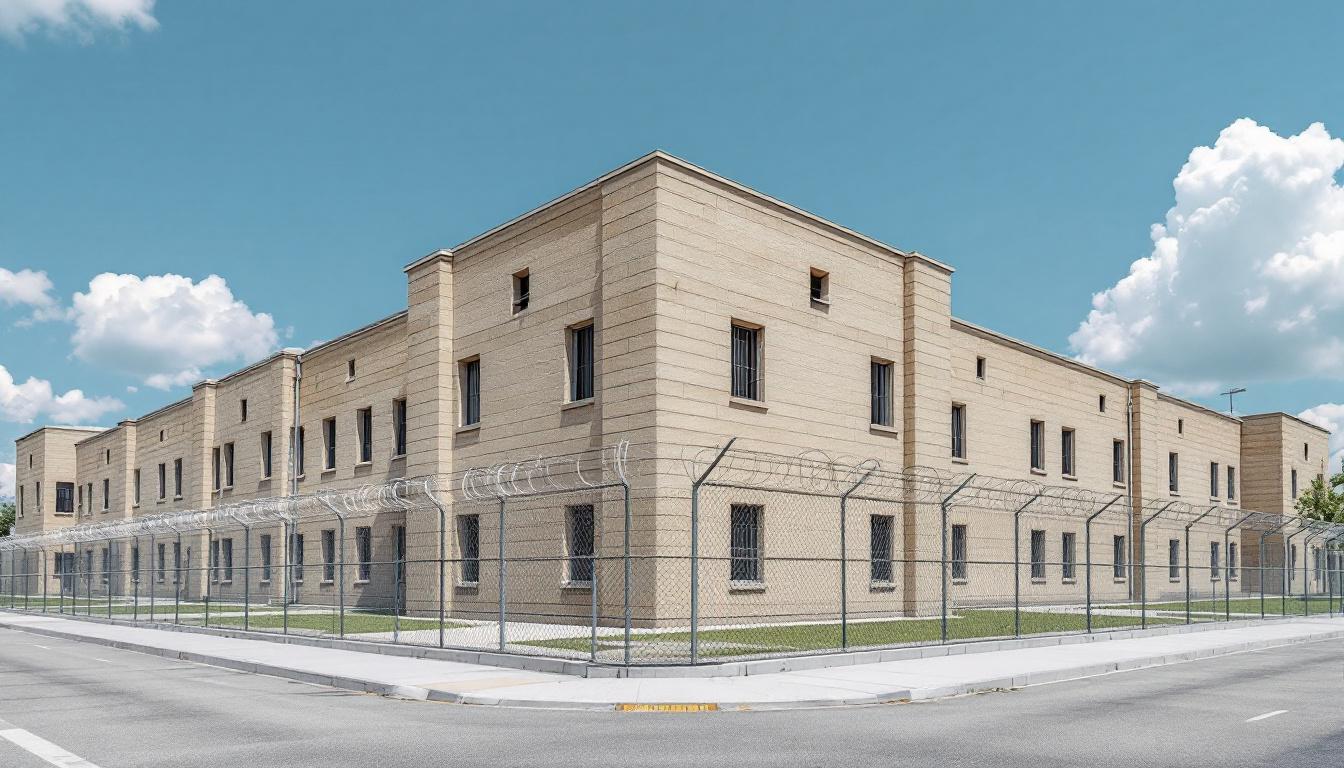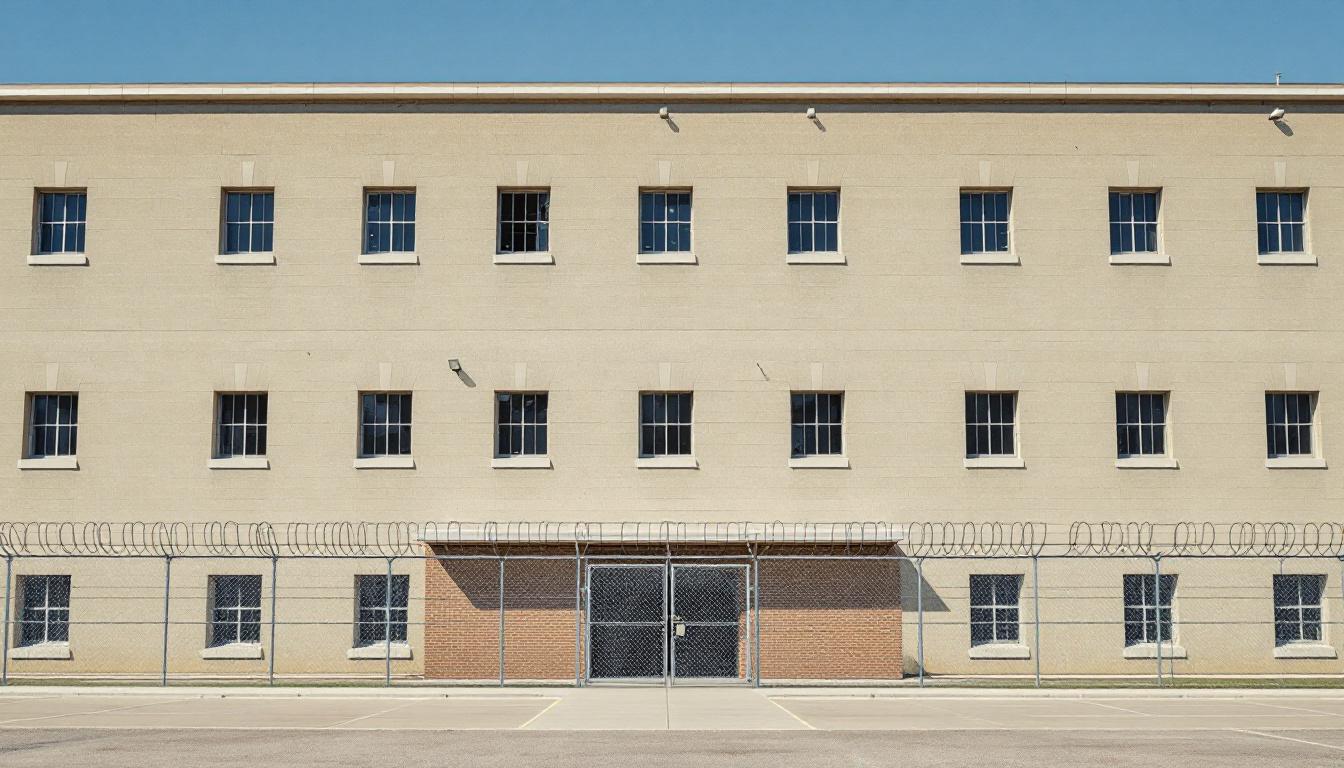
Quick Navigation
How to contact an inmate at Texas County Sheriff
This comprehensive guide will walk you through how to connect with an inmate at Texas County Sheriff. Follow the steps below to find an inmate and send letters and photos:
- Search for the inmate using our search tool below
- Create your account or log in to Penmate
- Write your message (up to 6,000 characters)
- Send instantly - inmates receive printed copies daily
Find an Inmate
Search for an inmate to start communicating today
Tip: You can search by first name, last name, or inmate ID number
To contact a person at Texas County Sheriff start by searching for the person on the official facility website. Perform a search by following these steps:
- Step 1: Enter their first name and last name into the search form and click "Search"
- Step 2: Locate their inmate record
- Step 3: Write down their Inmate ID and any housing information provided
Important! Be sure to enter the person's full name. Nicknames should not be used.
How to Send Messages to Inmates

You can use your phone or computer to send emails, letters, and photos to an inmate. Messages are sent electronically to inmate tablets or kiosks at the facility. If you would like to send a message, start by searching for an inmate at Texas County Sheriff.
Sending Photos and Postcards

A great way to send love and support to a loved one at Texas County Sheriff is to send photos and postcards. It only takes a few minutes to send photos from your phone and it makes a huge difference. You can also mail postcards with words of support and inspiration, or design your own postcard for special moments like birthdays and holidays.
Important! Be sure not to send any explicit photos or they may not be approved by the facility. You can also use a photo printing app like Penmate to make sure your photos are printed at the correct size (4x6 or 3x5) and are mailed according to the rules and regulations of Texas County Sheriff.
Frequently asked questions about Texas County Sheriff
-
How long does it take to deliver a message?
If you're sending an email message your letter is usually delivered within 24-48 hours. For messages sent via mail you should expect delivery within 3-7 days. All messages will need be approved by Texas County Sheriff.
-
How much does it cost to send a message to Texas County Sheriff?
You can send a message free using your phone or mail a message via USPS for the price of a $0.60 stamp and envelope. You can also purchase credits or e-stamps from services starting at $1.99.
-
What services can I use to contact an inmate at Texas County Sheriff?
Penmate
You can use Penmate to send letters and photos to an inmate from your phone. It's an easy way to stay in touch during your loved one's incarceration. Use the inmate locator to find an inmate's location and contact information, then you can send messages within a few minutes.
Securus messaging
Securus may be another option for communicating with an inmate at Texas County Sheriff. You can create a friends and family account and purchase credits to send messages. All messages will be reviewed and must be approved by the facility.
JPay
Some county jails and state prisons may support sending messages with JPay. You must register an account with the system, find your loved one, and purchase stamps to send messages. For some locations you can also attach photos.
Smart Jail Mail
You may also check if Smart Jail Mail is available at Texas County Sheriff. Smart Jail Mail is operated by Smart Communications and has contracted with some state and county jails. After purchasing credits, your messages and photos are sent to the facility, printed out, and then handed out to your loved one.
-
What is the mailing address of Texas County Sheriff?
Mailing address:
Texas County Sheriff
1102 S Ellison St
Guymon, OK 73942
Phone: (580) 338-4000 -
What are the visiting hours at Texas County Sheriff?
Visiting hours at Texas County Sheriff vary by housing unit and security level. Generally, visits are scheduled on weekends and holidays, with some facilities offering weekday visits. Contact the facility directly at (580) 338-4000 or check their website for the current visiting schedule. Visits typically last 30-60 minutes and must be scheduled in advance.
-
What items are prohibited when sending mail to Texas County Sheriff?
Prohibited items typically include: cash, personal checks, stamps, stickers, glitter, glue, tape, staples, paperclips, polaroid photos, musical or blank greeting cards, hardcover books, magazines with staples, and any items containing metal or electronics. Only send letters on plain white paper with blue or black ink. Photos must be printed on regular photo paper (no Polaroids). Always check with Texas County Sheriff for their specific mail policies.
-
How do I send money to an inmate at Texas County Sheriff?
You can send money to an inmate at Texas County Sheriff through several methods: 1) Online using JPay, Access Corrections, or the facility's approved vendor, 2) Money orders mailed directly to the facility with the inmate's name and ID number, 3) Kiosks located in the facility lobby, or 4) Over the phone using a credit or debit card. Fees vary by method, typically ranging from $2.95 to $11.95 per transaction.
-
Can I schedule a video visit with an inmate at Texas County Sheriff?
Many facilities now offer video visitation as an alternative to in-person visits. At Texas County Sheriff, video visits may be available through services like Penmate, Securus Video Connect, GTL, or ICSolutions. Video visits typically cost $10-20 for 20-30 minutes and must be scheduled in advance. You'll need a computer or smartphone with a camera and reliable internet connection. Contact the facility for their specific video visitation policies and approved vendors.
-
What identification do I need to visit an inmate at Texas County Sheriff?
All visitors must present valid government-issued photo identification such as a driver's license, state ID, passport, or military ID. Minors must be accompanied by a parent or legal guardian who can provide the minor's birth certificate. Some facilities require visitors to be on the inmate's approved visitation list, which may require a background check. Contact Texas County Sheriff for specific ID requirements and visitor approval procedures.
-
How can I find out an inmate's release date?
To find an inmate's release date at Texas County Sheriff, you can: 1) Use the online inmate search tool if available, 2) Call the facility's records department, 3) Contact the inmate's case manager or counselor, or 4) Have the inmate provide this information during a call or visit. For privacy reasons, some facilities only release this information to immediate family members.
Facility Overview
Official Website

About Texas County Sheriff
Nestled in the Oklahoma Panhandle, Guymon serves as home to the Texas County Sheriff’s Office, OK, a correctional facility that plays a vital role in maintaining community safety while addressing the complex needs of those in its custody. This OK correctional facility operates within the broader framework of Oklahoma’s correctional system, balancing the dual responsibilities of secure detention and meaningful intervention programs designed to reduce recidivism.
The facility typically offers residents services that may include educational opportunities, substance abuse counseling, and vocational training programs aimed at preparing individuals for successful reintegration into their communities. Staff members generally work to maintain a structured environment that prioritizes both security protocols and rehabilitation efforts, recognizing that effective correctional practices often require addressing underlying issues that contribute to criminal behavior. The Texas County Sheriff’s Office, OK commonly collaborates with local community organizations and service providers to enhance programming options available to residents.
Through its commitment to security and rehabilitation, this correctional facility serves not dedicated as a place of detention but as a potential catalyst for positive change in the lives of those it houses. The facility’s approach often emphasizes personal accountability while providing resources that may help residents develop skills and perspectives necessary for law-abiding citizenship upon release, ultimately contributing to the safety and well-being of the broader Guymon community.
Programs & Services
Rehabilitation initiatives at Texas County Sheriff’s Office in Oklahoma center on developing practical skills and personal growth opportunities for residents. The facility typically emphasizes a comprehensive approach that addresses both immediate needs and long-term success planning. These initiatives often include structured learning environments designed to help residents build confidence and prepare for community reintegration.
Educational initiatives may deliver basic literacy instruction, GED preparation, and continuing education opportunities tailored to individual learning levels. Residents often participate in structured classroom settings that focus on fundamental academic skills. Moreover, vocational training initiatives typically include hands-on instruction in trades and technical skills that align with local employment opportunities. These training sessions often emphasize practical experience alongside theoretical knowledge, helping residents develop marketable job skills.
Support initiatives frequently encompass faith-based programming that provides spiritual guidance and community connection for interested residents. Job placement assistance may deliver resume writing workshops, interview preparation, and connections to potential employers in the surrounding area. Moreover, decision-making skills initiatives typically focus on developing critical thinking abilities and personal responsibility through structured discussions and practical exercises. These support services often work together to address the various challenges residents may face during their transition back to the community.
Daily Life & Visitation

Structured routines at present actively guide every aspect of residential life, with consistent schedules that deliver predictability and order throughout each day. Residents typically begin with early morning wake-up calls, followed by scheduled meal times, work assignments, and designated periods for recreation and personal activities. The facility generally maintains regular counts and security procedures that occur at predetermined intervals, ensuring accountability while allowing residents to anticipate and prepare for daily transitions.
Moreover, living accommodations typically consist of shared housing units where residents are assigned bunks and provided basic necessities. The facility usually offers three meals per day served in common dining areas, with menus that generally meet nutritional standards and accommodate dietary restrictions when possible. Personal property allowances may include approved clothing items, hygiene products, and limited personal effects, while commissary services often provide opportunities for residents to purchase additional approved items using funds from their accounts.
Whereas work assignments deliver structure and purpose, recreational activities typically include access to television areas, reading materials, and scheduled exercise periods. Visitation policies generally allow family members and approved visitors to maintain contact during designated hours and days, often supplemented by telephone privileges and correspondence opportunities. Programming schedules may include educational classes, religious services, and various group activities that actively support rehabilitation goals and community connection, helping residents maintain important relationships with family and support systems during their time at the facility.
Ready to Connect?
Start communicating with your loved one today
Search for an Inmate








